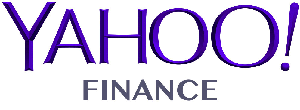The labor shortages of frontline workers have become critical and costly across many industries and organizations as COVID-19 drags on. From hospitality to construction, a lack of candidates is preventing businesses from reopening at full capacity and is adding to the pressure already weighing on overworked HR teams and hiring managers. TalentClick is here to help you quickly sort through the candidates you do have AND help you grow your talent pool from within.
Here are the top 5 ways TalentClick behavioral assessments can help you find workers during a talent shortage:
1. Assess Potential

So the candidate doesn’t tick all the boxes – but could they still be a great hire? Perhaps they don’t have previous experience in the exact same job — maybe they’ve never driven a bus, maybe they’ve never led a sales team. But their workstyle fits the job, and their values align with your culture. The candidate may not have had the same opportunities in the past for education, experience, or promotions, so their resume may not stand out… but all the foundational pieces are there. That’s a candidate filled with potential, and ready to learn.
TIP: Behavioral assessments help you to identify talented individuals who are naturally suited to excel in a role, even if they haven’t done the job before. With Benchmarks and Fit Scores you can quickly assess the potential of candidates for any job and widen your talent pool.
2. Screen People in — Remove interview bias
We all have unconscious biases and preconceived notions that can interfere with making objective decisions in the hiring process, especially during interviews. Behavioral assessments can help bring data to the mix to ‘screen in’ those high-performing employees who would have otherwise been screened out if an interview alone was used.
TIP: Interviewer biases may cause a candidate who seems ‘likable’, similar to the interviewer, or a ‘good talker’ to be rated highest. If a candidate appears quiet or ‘unengaged’ to the interviewer, it doesn’t mean they would perform poorly on the job. Job fit varies by job and by organization.
With added insights into workstyle, work values, and risk-taking behaviors, assessments can provide a fuller picture of the candidate in front of you, and help screen in more candidates during a candidate shortage. This is a great practice to increase diversity, equity, and inclusion on your team too!
3. A bad hire is still a bad hire
In a candidate shortage, many clients have told us they can be tempted to hire everyone who applies, regardless of their job fit. But a bad hire is still a bad hire. What is the risk to your business of hiring someone who is toxic to your workplace culture, or causes your safety incident rate to rise? The impact of one bad hire on your business can be exponential if they drive your top performers away, negatively impact customer service, or put other workers at risk.

TIP: It is understandable that in a candidate shortage you might lower your bar of what meets your hiring criteria, but how low is too low? The color-coded fit scores can help determine where to draw the line, so that you are making smart decisions that keep your business growing, running, and productive without introducing unnecessary risk.
4. Understand gaps and blind spots
As you struggle for candidates, you may have to hire someone who is less than a perfect fit to keep your business running. This means it is more important than ever to understand the areas where they might fall short on the job. TalentClick Reports provide personalized interview questions, management considerations, and coaching tips to help you have your eyes wide open in hiring and employee development. By understanding an individual’s strengths AND potential shortfalls you can coach more effectively on how to improve on the job behavior.

TIP: Are you hiring an emerging leader? The candidate may fall outside the leadership benchmark in a few dimensions. See the management considerations on how to help nurture this leader in the role, such as providing positive feedback, and performance suggestions.
5. Build Productive Teams with Analytics
You’ve finally hired a group of workers with mixed skills, behavioral tendencies, personality traits, and experience. Get the most out of this team with Group Analytics and Team Reports. By plotting out your team reports, you can see where their strengths and risks are, identify potential areas of conflict, and build the best teams by combining top performers and expertise with new hires who may not have the same top-performing traits.
TIP: Use your team reports with the whole team, for team building, onboarding, and growth! By seeing how their traits compare with other team members, managers will understand their on-the-job behavior more fully, and drive communication, understanding, and productivity within your workers.
In these challenging times finding qualified candidates to keep your organization flourishing has never been harder. Behavioral assessments can be the answer you’re looking for, to source talent and build your talent from within.









